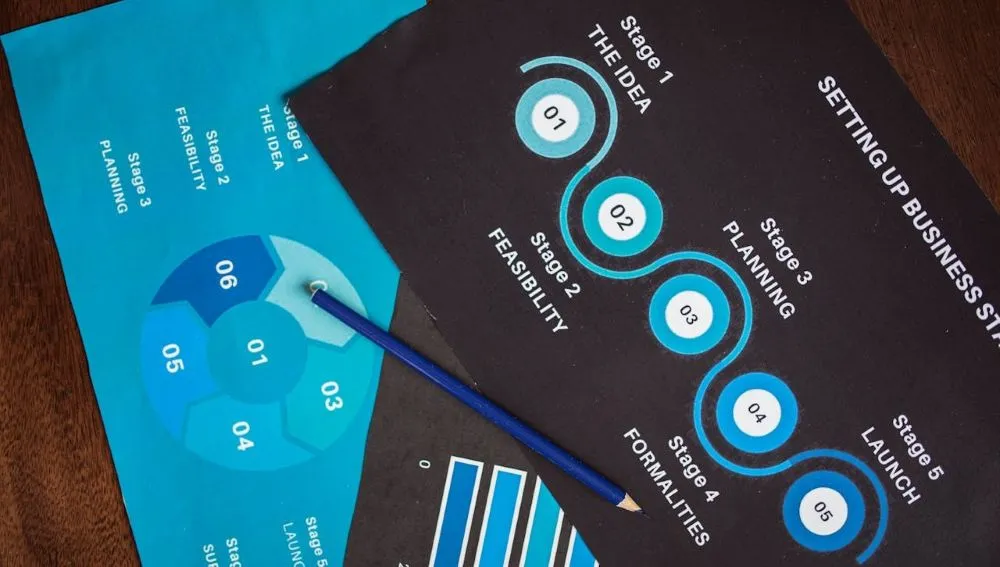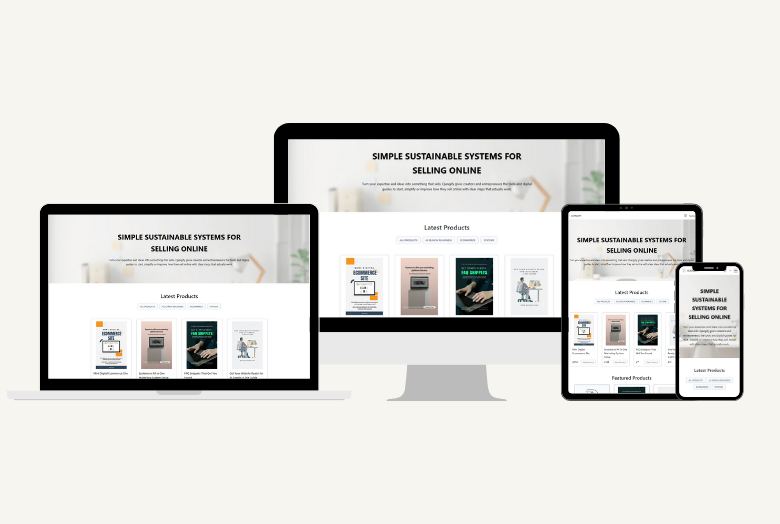Once your online shop is live, the next step is learning how to make it work quietly and consistently. A sustainable lifestyle business is not about chasing growth for growth’s sake, it is more about creating income that supports your life rather than takes over it.
Running a small ecommerce site can be both enjoyable and reliable if you build it around steady habits, not constant hustle. Unless constant stress and hustle are your thing of course. Some people thrive on it and there is nothing wrong with that if you love it. I prefer a more relaxed approach and here's how I have done it:
1. Build Systems, Not Stress
The biggest difference between a hobby and a lifestyle business is structure.
Without simple systems, even small shops can start to feel chaotic.
Start with three foundations:
A simple routine: Choose one morning or evening a week to review orders, check messages, and update content.
An organised folder system: Keep all product images, PDFs, and copy in labelled folders on your computer/laptop so updates take minutes, not hours.
An automation mindset: Use the built-in tools in Djangify or your email provider to send confirmations, follow-ups, and receipts automatically.
Tip: Sustainable doesn’t mean doing nothing, it means setting things up so daily maintenance doesn't take hours. It can be frustrating looking for an image or a password that you need.
2. Keep Your Product Range Manageable
One of the most common reasons small shops burn out is trying to sell too much.
You do not need dozens of offers to make consistent income.
Instead:
- Focus on 3–10 high-quality products that complement one another.
- Retire or update older products once a year.
- Group smaller downloads into bundles or themed collections.
Customers appreciate simplicity. When your store feels clear and focused, it builds trust and repeat buyers naturally.
Research insight: Studies on consumer choice overload (Iyengar & Lepper, Columbia University) show that too many options reduce sales. Limiting your range actually increases conversions and satisfaction.
3. Create a Gentle Marketing Rhythm
Marketing your store does not have to mean being online all day. Think of it as a rhythm you repeat not a race you run.
Try this simple monthly cycle:
Week 1: Publish one helpful post or short tip related to your product.
Week 2: Share a customer story or review.
Week 3: Offer a limited-time discount or bundle.
Week 4: Restock your creativity - update images or add one small improvement to your site.
Repeating this cycle keeps your shop visible without exhaustion. The goal is regular visibility that builds over time.
4. Build Connection Over Noise
A lifestyle business thrives on trust, not algorithms. You do not need to shout to be heard but you do need to be clear, consistent, and helpful.
Ways to strengthen connection:
- Add a short thank-you email to every order.
- Invite customers to join your newsletter for new releases.
- Share real stories: what inspired each product, what you’ve learned, or what customers say.
This human touch is what big ecommerce stores cannot replicate.
Your story - even in a few sentences - is part of your brand. I have followed a YouTuber who creates vlogs. She takes you with her when she goes to post orders from her store, she makes videos of her cooking. She keeps her small online store and brand in our hearts and minds twice a week - and has done for over 10 years now.
5. Track What Works (and Ignore the Rest)
Once your site has been live for a few months, look at what’s quietly performing.
Ask yourself:
- Which products sell regularly without extra effort?
- Where are your visitors coming from - social, email, or search?
- Which posts or promotions got the most engagement?
Focus your time on the 20% that brings 80% of your results. If one small product brings most of your income, create more around that theme instead of adding something unrelated.
Djangify’s admin dashboard and Stripe analytics make it easy to see this pattern without complicated tools.
6. Revisit Your Lifestyle Goals Regularly
A sustainable business adapts as your life changes.
Every few months, ask:
How much time do I want to spend on my store weekly?
What income level feels comfortable, not pressured?
What part of this work still feels meaningful?
Adjust your products, schedule, or prices to match. Growth is optional; stability is the goal.
Takeaway: A lifestyle business is not built once. It is refined over time so it continues to serve both your audience and your life.
7. Keep Your Focus: Consistency Over Expansion
It’s easy to compare yourself to bigger stores, but remember: consistency compounds.
A few quiet sales every week build a foundation of freedom faster than sporadic big wins followed by burnout.
Small, simple systems create long-term stability and that is what makes a business sustainable.
Reflection
This week, look at your store as if you were a customer.
Is it easy to understand what you sell, how to buy, and what happens next?
If not, simplify one thing - a product description, navigation menu, or email follow-up.
Every simplification saves you time later.


